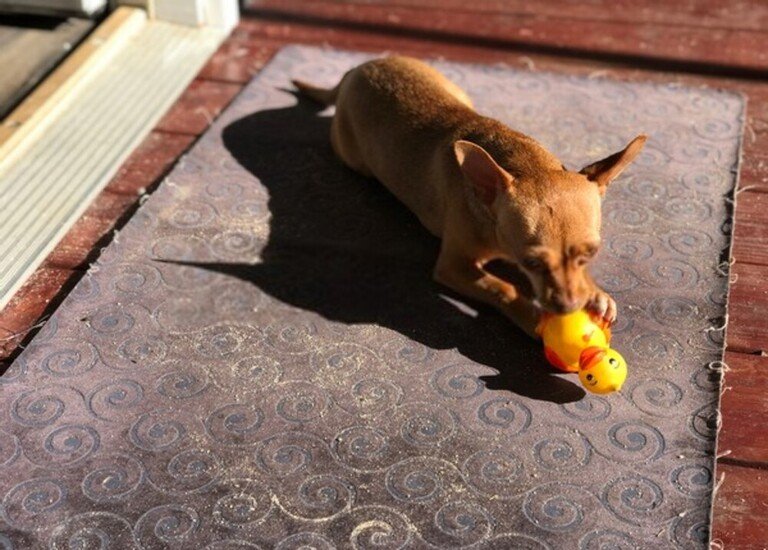Your beloved canine companion, the epitome of joy and unconditional love, deserves the world, and a pristine backyard where they can romp and play is an essential part of that. However, the reality is often a muddy, unkempt trail that turns into a slushy mess after every rainfall. Fret not, fellow pet parent, for this comprehensive guide will equip you with the knowledge and tools to transform your muddy backyard dog trail into a verdant paradise, where your furry friend can frolic freely.

Image: www.averagepersongardening.com
Before embarking on this mission, let us unravel the root of the problem. Dog trails become muddy when heavy rainfall saturates the soil, and the constant treading of paws compacts it, rendering it impervious to water absorption. To break this vicious cycle, we must employ a two-pronged approach: improving drainage and creating a more resilient surface. Here’s a step-by-step plan to get you started:
Step 1: Enhance Drainage
The first step is to facilitate better drainage of rainwater. Dig a series of shallow trenches, about 6 inches wide and 12 inches deep, along the length of the trail. Fill these trenches with gravel or crushed stones to create a permeable layer that will allow water to seep through the soil.
Step 2: Introduce a Gravel Base
Next, lay down a layer of gravel over the entire trail. The depth will vary depending on the severity of the mud problem, but 2-3 inches is a good starting point. This layer will provide a stable base and prevent paws from sinking into the mud.
Step 3: Reinforce with Pavers or Stepping Stones
To further improve durability and create defined pathways, consider installing pavers or stepping stones along the trail. This will not only prevent mud from splashing up, but also provide a more comfortable walking surface for both you and your dog.

Image: www.pinterest.com
Step 4: Create Designated Play Areas
To minimize the impact on the rest of the backyard, designate specific play areas where your dog can run and play freely. These areas can be fenced in to prevent your canine friend from straying too far.
Step 5: Plant Vegetation
In addition to the structural solutions, vegetation can also play a crucial role in mud control. Plant trees and shrubs along the edges of the trail, as their roots will help absorb excess water and stabilize the soil. You can also sow grass seeds in areas where there is sufficient sunlight.
Step 6: Regular Maintenance
Regular maintenance is key to keeping your dog trail in pristine condition. Rake or sweep away leaves and debris that can clog drainage channels. Inspect the gravel and pavers periodically and replenish or repair as needed.
How To Fix A Muddy Backyard Dog Trail
Conclusion
Reclaiming your backyard from the clutches of mud is a rewarding endeavor that will provide your furry companion with endless joy and comfort. By following the steps outlined above, you can transform that muddy, unsightly trail into a beautiful, functional space where both you and your dog can create lasting memories.
Remember, a well-maintained backyard dog trail is not just an investment in your pet’s happiness, but also an enhancement to your own outdoor living space. Enjoy the journey of creating a paw-some paradise for your beloved canine friend.